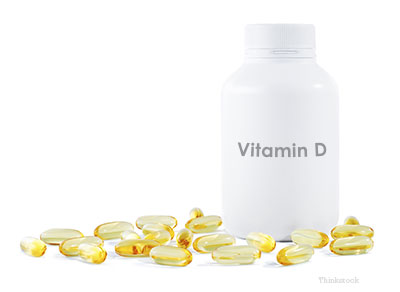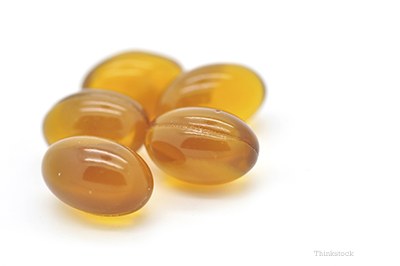In Minnesota, we’re all deficient in vitamin D levels due to lack of sun exposure (thanks to six months of winter). As a result, many people supplement with multivitamins that contain vitamin D (often listed as vitamin D2, vitamin D3, cholecalciferol, or calcipotriene).
While low levels of vitamin D are very safe, this vitamin can be very poisonous when ingested by dogs (or rarely, cats).
Dogs and cats can accidentally be poisoned by vitamin D from common products in the house. There are numerous sources of vitamin D3 around including:
can accidentally be poisoned by vitamin D from common products in the house. There are numerous sources of vitamin D3 around including:
- Omega fatty acid supplements
- Multivitamins
- Concentrated vitamin D drops
- Prescription vitamins
- Psoriasis cream (commonly in the form of calcipotriene, found in a brand, topical cream called “Dovonex”)
- Mouse and rat poison containing cholecalciferol or listed as “vitamin D3”
When ingested in poisonous amounts, vitamin D can result in life-threatening elevations in calcium (i.e., hypercalcemia) and phosphorous (i.e., hyperphosphatemia). When this occurs, it results in soft tissue mineralization–or hardening of the tissue. This mineralization often occurs in the kidneys (renal tubules), gastrointestinal tract, aorta, and even the heart. This can result in severe acute kidney failure within just a few days.
Most supplements list the amount of each vitamin using international units (IU). One IU of vitamin D3 is the equivalent of 0.025 mcg or 0.000025 mg of Vitamin D3. At doses as low as 0.1 mg/kg, we can start to see signs of vitamin D poisoning. (Rather than stress out over the math, call a professional for assistance! When in doubt, contact your veterinarian or ASPCA Animal Poison Control Center (APCC) for advice on what to do. They can help calculate whether or not a toxic amount of vitamin D was ingested.)
Symptoms of a vitamin D overdose
Clinical signs of vitamin D poisoning are initially subtle, and may not show up for 2-3 days when advanced signs of kidney failure are seen. Signs to look out for with vitamin D poisoning include:
- Not eating or decreased appetite
- Excessive or decreased thirst and urination
- Weakness or lethargy
- Dehydration
- Bad breath
- Vomiting
- Diarrhea
- Weight loss
Other clinical signs that your veterinarian may detect include:
- Increased kidney values
- Bad breath, secondary to kidney failure
- Dehydration
- Abdominal pain
Diagnosing a vitamin D overdose
Your veterinarian will need to do blood work specifically looking at the kidney function (creatinine and BUN), urine concentration (urine specific gravity), and electrolytes (e.g., calcium and phosphorous)
Other tests your veterinarian may need to run include:
- Complete blood count to look at the white and red blood cells and platelets
- Chemistry panel to look at the kidney and liver function
- Electrolytes to look at the calcium, phosphorous, and salt balance (sodium, potassium, etc.)
- Urinalysis to look for the presence of an underlying infection, crystals, or check for appropriate urine concentration
If no history of vitamin D exposure is known, additional tests may be necessary to rule out cancer or other causes for high calcium levels including:
is known, additional tests may be necessary to rule out cancer or other causes for high calcium levels including:
- X-rays to rule out evidence of mineralization of tissue (secondary to hypercalcemia), underlying cancer, bladder stones, etc.
- Abdominal ultrasound to look for evidence of cancer, which is a leading cause of hypercalcemia in dogs.
- Parathyroid hormone (PTH) and PTH-rP concentration (parathyroid hormone related protein) levels to rule out other underlying problems such as hyperparathyroidism that causes elevated calcium levels.
Vitamin D overdose treatment
As Vitamin D3 poisoning can be life threatening to dogs and cats, aggressive treatment is necessary, which includes round-the-clock care for at least 48 hours. Without aggressive therapy, pets will be predisposed to chronic kidney failure for the rest of their life. Treatment includes:
- Decontamination (e.g., inducing vomiting — if appropriate — followed by giving multiple doses of charcoal to bind the poison from the intestines)
- Anti-vomiting medication
- Oral gastrointestinal antacids that decrease phosphorous (e.g., phosphate binders)
- Aggressive IV fluids with 0.9% saline to flush the calcium out of the body
- Medication to help promote removal of calcium from the body (e.g., prednisone, furosemide)
- Medications to prevent hypercalcemia (e.g., pamidronate, calcitonin)
Frequent monitoring of kidney function and electrolytes is still necessary after going home. Typically, function needs to be monitored every 12-24 hours while hospitalized, and every 2-3 days once home.
Ultimately, the goal is to prevent hypercalcemia and secondary acute kidney failure. Even after hospitalization and treatment, some dogs and cats may need to go home on oral diuretics and steroids for weeks. Even with aggressive treatment, chronic renal failure may be a secondary condition.
If your dog or cat got into a source of vitamin D, contact your veterinarian or APCC immediately for guidance. While treatment is often expensive (as it requires hospitalization for typically 2-7 days), it can be life saving for your dog or cat. Unfortunately, as with most poisoning cases, the longer you wait, the more expensive it is to treat and the worse the prognosis.
If you have any questions or concerns, you should always visit or call your veterinarian -- they are your best resource to ensure the health and well-being of your pets.
